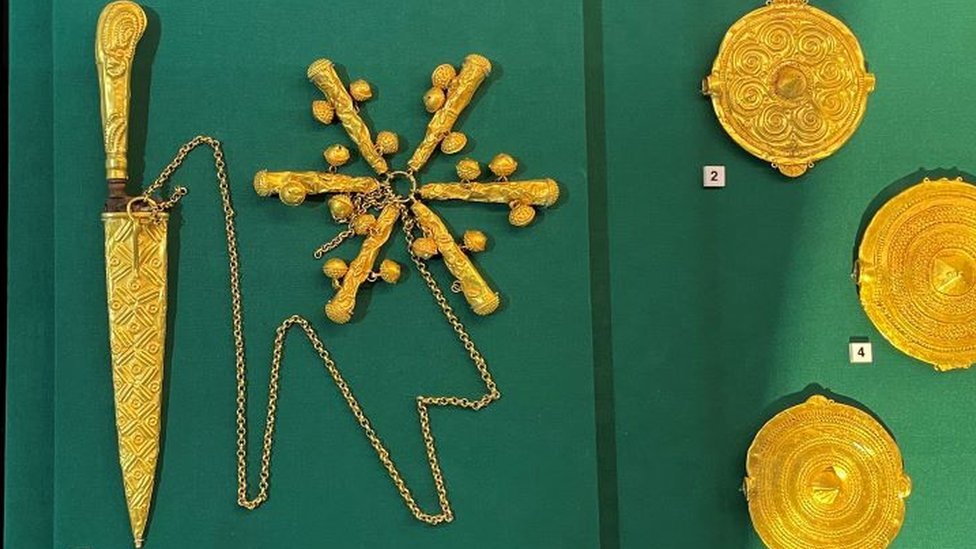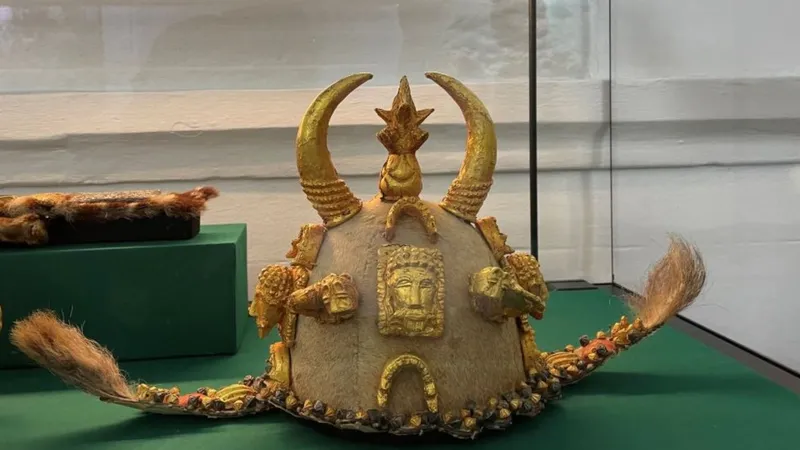Ghana Celebrates Return of Asante Gold Treasures, Once Looted by British
After 150 years, looted artifacts from the Asante kingdom have finally found their way back to Ghana, where they are now proudly displayed at the Manhyia Palace Museum in Kumasi, the capital of the Asante region. Ghanaians, filled with a sense of pride and reverence, flocked to witness the homecoming of these 32 precious items, symbolizing a significant moment in the nation’s history.
“This is a day for Asante. A day for the Black African continent. The spirit we share is back,” declared Asante King Otumfuo Osei Tutu II, encapsulating the collective sentiment of a people reclaiming a vital part of their heritage. However, the return of these artifacts comes with a caveat—the items have been loaned to Ghana for a period of three years, with the possibility of extension subject to approval by the British culture secretary.
The agreement facilitating this historic return was forged between two prominent British museums, the Victoria & Albert Museum (V&A) and the British Museum, and the revered Asante king himself, rather than the Ghanaian government. Despite the modern democratic framework of Ghana, the Asante king, or Asantehene, remains a symbol of traditional authority, revered for embodying the spirits of his predecessors.

For many Ghanaians, the restitution of these artifacts represents more than just a symbolic gesture—it is a restoration of dignity and cultural identity. Henry Amankwaatia, a proud Asante and retired police commissioner, expressed this sentiment, reflecting on the profound impact of the artifacts’ return on the community.
Among the treasures repatriated are artifacts of immense cultural and historical significance, including the sword of state, gold peace pipe, and badges worn by officials tasked with purifying the king’s soul. These artifacts, looted during the Anglo-Ashanti wars of the 19th century, bear witness to the triumphs and trials of the Asante kingdom, serving as tangible links to its storied past.
Dr. Tristam Hunt, director of the Victoria and Albert Museum, acknowledged the painful history surrounding the acquisition of these objects, tainted by the scars of imperial conflict and colonialism. Yet, he emphasized the power of cultural exchange and reconciliation embodied by their return to Kumasi.
However, the return of the artifacts is not without controversy. Under UK law, national museums are prohibited from permanently repatriating contested items, leading to concerns that such loan deals may imply acceptance of the UK’s ownership. While many Ghanaians advocate for the permanent return of these treasures, the current loan arrangement serves as a pragmatic compromise, circumventing legal restrictions while honoring the nation’s cultural heritage.
The restitution of these artifacts marks a pivotal moment in the ongoing discourse surrounding cultural restitution and decolonization. As African countries assert their rightful ownership over looted treasures, the return of the Asante artifacts is a beacon of hope and progress in rectifying historical injustices and fostering cross-cultural understanding.


















